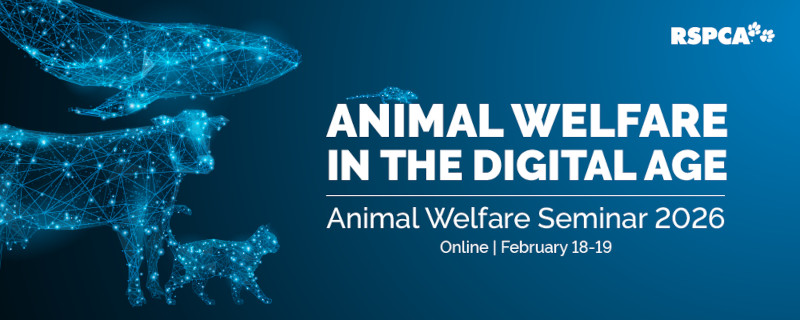Breed specific legislation (BSL) consists of legal restrictions on the importation, sale, keeping and rehoming of certain types of dogs (‘restricted breeds’), irrespective of their actual behaviour.
BSL is based on assumptions that certain breeds of dog are inherently dangerous, that those breeds can be readily identified, and that banning those breeds decreases the rate of dog bites and attacks. All of these assumptions are flawed and are not supported by evidence [1].
The RSPCA advocates that dogs should not be declared dangerous on the basis of breed or appearance. Each individual dog should be assessed based on their actual behaviour.
BSL should be removed for several key reasons:
- Breed is a poor predictor of individual behaviour [2].
- BSL is discriminatory; certain breeds are not inherently dangerous [3]. For example, temperament tests have found no significant differences between ‘restricted breeds’ and Golden Retrievers [4].
- BSL has devastating consequences for dogs and people; authorities can seize dogs with no history of aggressive behaviour, purely based on appearance, and owners are forced to fight for their dog’s life [5].
- BSL can lead to the unnecessary killing of good dogs who could otherwise be rehomed.
- BSL relies on an arbitrary list of ‘restricted breeds’, which is not based on any evidence that these ‘breeds’ are any more likely to be dangerous compared to other dogs [6, 7].
- BSL is problematic because some ‘restricted breeds’ cannot be reliably identified; ‘pit bull terriers’ and cross-breeds are listed as ‘restricted breeds’ in many Australian jurisdictions but ‘pit bull’ is not a recognised pure breed, and DNA testing is not possible because these dogs do not share a genetic signature [8]. Rather, ‘pit bull’ is a descriptive label given to dogs that loosely share some physical features [9]. BSL effectively says that a dog should live or die depending on how they look.
- BSL leads to misconceptions that breed is the most important factor influencing dog aggression, heightening perceptions that a ‘restricted breed’ is aggressive, making people feel more fearful, and increasing the reporting of incidents involving those breeds [10].
- BSL ignores the complexities of dog behaviour and the role of owner behaviour, socialisation, rearing, training, environment, and circumstances.
- BSL is not an effective means to prevent or reduce the rate of dog bites or attacks [11–14]. Studies from all over the world have shown that BSL has little to no effect on the total number of dog bites and attacks, and laws to reduce the risk of these incidents should not focus on breed [11–13].
The RSPCA does not believe that BSL is effective in preventing or reducing dog attacks or in protecting the public from dangerous dogs.
Instead of BSL, the RSPCA believes that dog bite/attack prevention strategies must be evidence based, and include identification and registration of all dogs, control of free-roaming dogs, desexing, education campaigns, reward-based training, socialisation, and veterinary treatment (eg. behavioural modification) where required. For a full explanation of the RSPCA’s position please read our Information Paper – Preventing dog attacks in the community at the link below, and Policy A7 section titled “Managing dog bites in the community”.
References
[1] Patronek, G. J., Slater, M., & Marder, A. (2010). Use of a number-needed-to-ban calculation to illustrate limitations of breed-specific legislation in decreasing the risk of dog bite–related injury. Journal of the American Veterinary Medical Association, 237(7), 788–792.
[2] Morrill, K., Hekman, J., Li, X., McClure, J., Logan, B., Goodman, L., Gao, M., Dong, Y., Alonso, M., Carmichael, E., Snyder-Mackler, N., Alonso, J., Noh, H. J., Johnson, J., Koltookian, M., Lieu, C., Megquier, K., Swofford, R., Turner-Maier, J., … Karlsson, E. K. (2022). Ancestry-inclusive dog genomics challenges popular breed stereotypes. Science, 376(6592), eabk0639.
[3] Casey, R. A., Loftus, B., Bolster, C., Richards, G. J., & Blackwell, E. J. (2014). Human directed aggression in domestic dogs (Canis familiaris): Occurrence in different contexts and risk factors. Applied Animal Behaviour Science, 152, 52–63.
[4] Ott, S. A., Schalke, E., von Gaertner, A. M., & Hackbarth, H. (2008). Is there a difference? Comparison of golden retrievers and dogs affected by breed-specific legislation regarding aggressive behavior. Journal of Veterinary Behavior, 3(3), 134–140.
[5] Parliament of Victoria. (2016). Inquiry into the legislative and regulatory framework relating to restricted-breed dogs.
[6] House of Lords Debate, no. cc1407-61 (1991).
[7] Klaassen, B., Buckley, J. R., & Esmail, A. (1996). Does the dangerous dogs act protect against animal attacks: A prospective study of mammalian bites in the accident and emergency department. Injury, 27(2), 89–91.
[8] Olson, K. R., Levy, J. K., Norby, B., Crandall, M. M., Broadhurst, J. E., Jacks, S., Barton, R. C., & Zimmerman, M. S. (2015). Inconsistent identification of pit bull-type dogs by shelter staff. The Veterinary Journal, 206(2), 197–202.
[9] Hussain, S. G. (2005). Attacking the Dog-Bite Epidemic: Why Breed-Specfic Legislation Won’t Solve the Dangerous-Dog Dilemma. Fordham L. Rev., 74, 2847.
[10] Creedon, N., & Ó’Súilleabháin, P. S. (2017). Dog bite injuries to humans and the use of breed-specific legislation: A comparison of bites from legislated and non-legislated dog breeds. Irish Veterinary Journal, 70.
[11] Cornelissen, J. M., & Hopster, H. (2010). Dog bites in The Netherlands: A study of victims, injuries, circumstances and aggressors to support evaluation of breed specific legislation. The Veterinary Journal, 186(3), 292–298.
[12] Nilson, F., Damsager, J., Lauritsen, J., & Bonander, C. (2018). The effect of breed-specific dog legislation on hospital treated dog bites in Odense, Denmark—A time series intervention study. PloS One, 13(12), e0208393.
[13] Rosado, B., García-Belenguer, S., León, M., & Palacio, J. (2007). Spanish dangerous animals act: Effect on the epidemiology of dog bites. Journal of Veterinary Behavior, 2(5), 166–174.
[14] Collier, S. (2006). Breed-specific legislation and the pit bull terrier: Are the laws justified? Journal of Veterinary Behavior: Clinical Applications and Research, 1(1), 17–22.

